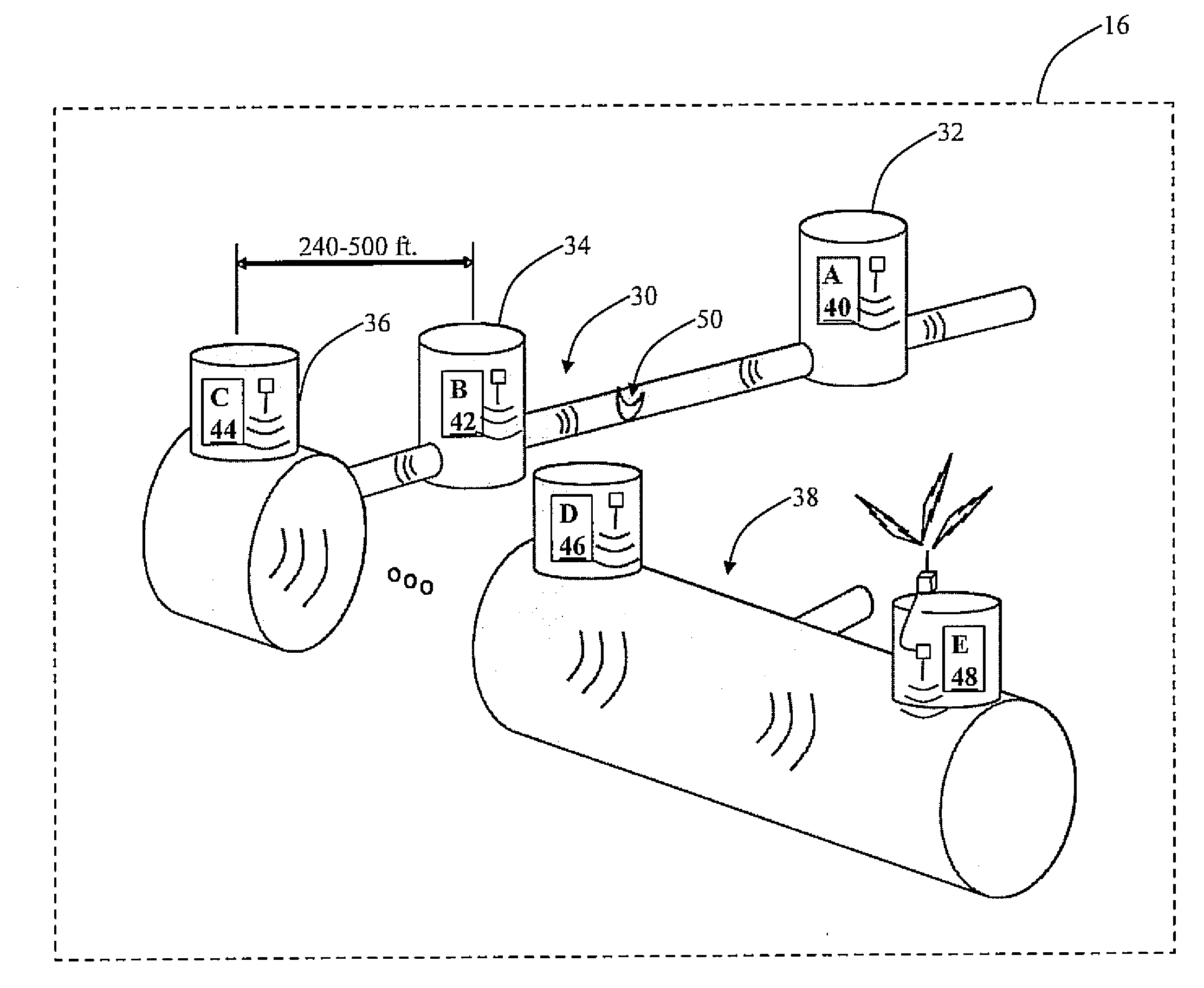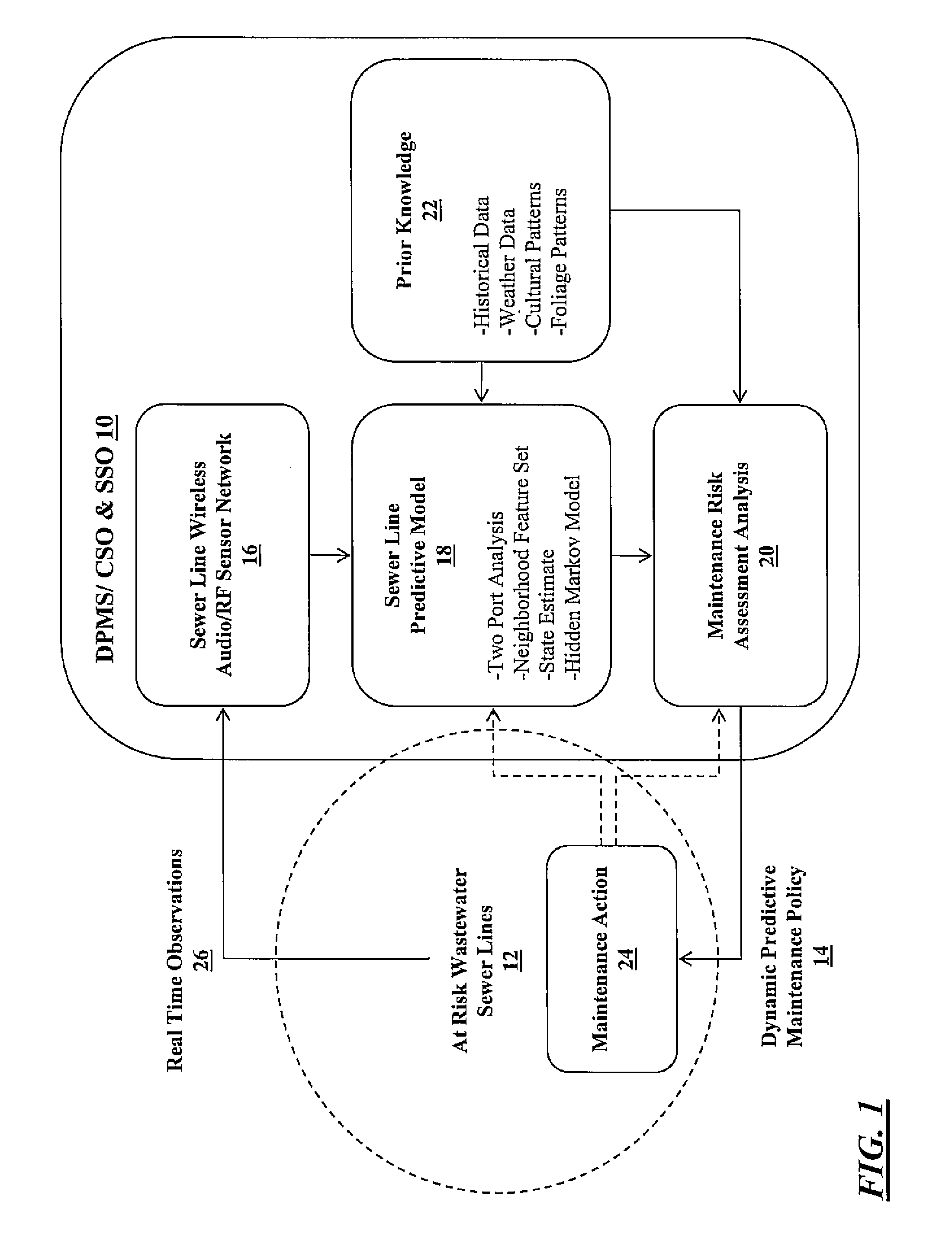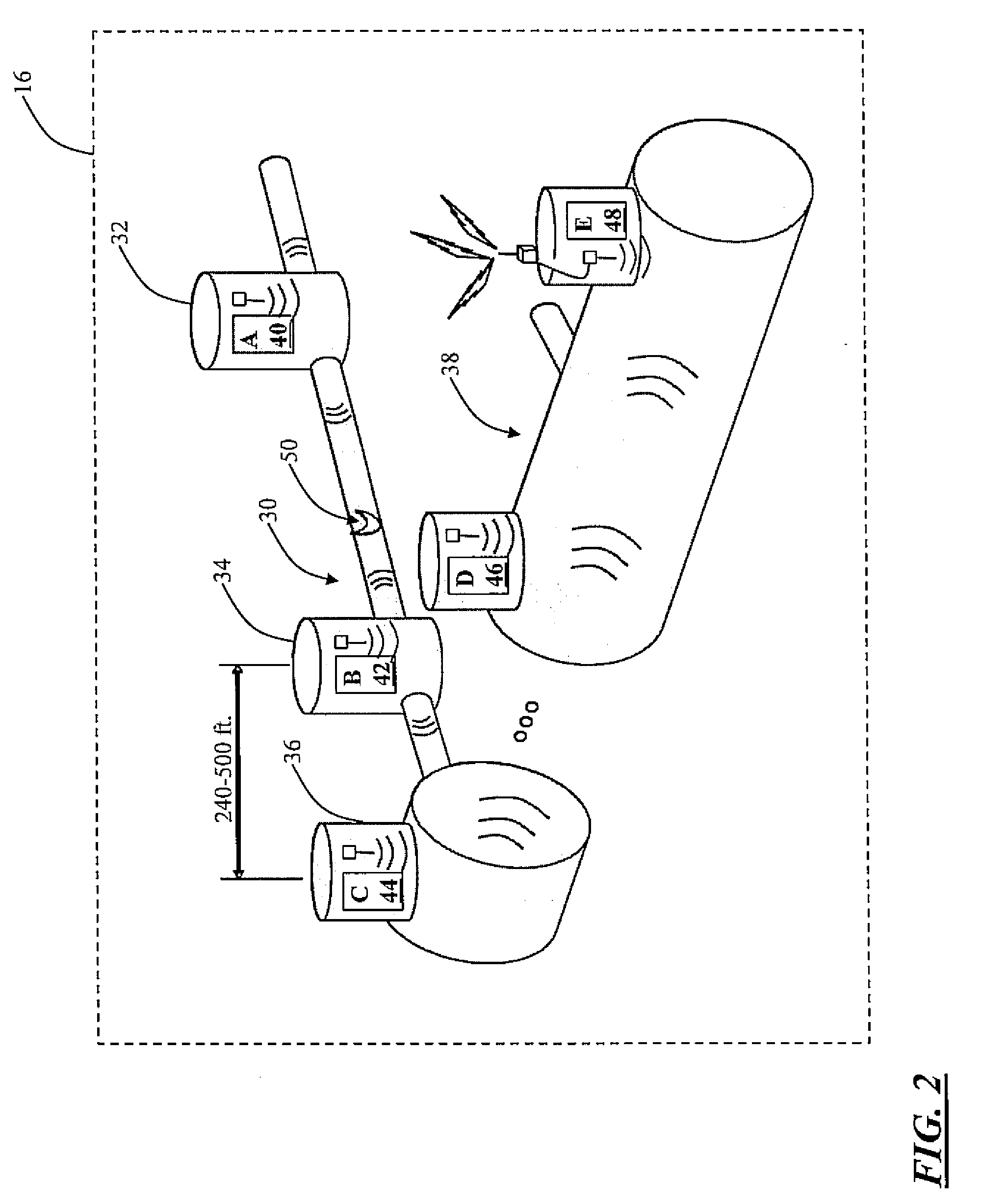[0004]In various exemplary embodiments, the present invention provides monitoring systems and methods for sewer and other conduit systems. These monitoring systems and methods allow wastewater utilities and the like to implement dynamic predictive maintenance systems (DPMSs) and institute just-in-time maintenance programs for mitigating combined sewer overflows (CSOs), involving both wastewater and storm water, and SSOs, involving only wastewater. For example, the monitoring systems and methods allow for the detection of blockages in low flow pipes due to grease clogs, root balls, and the like, as well as breakages. Maintenance efforts may then be directed to areas where problems are the most likely, as well as where they already exist. It will be readily apparent to those of ordinary skill in the art, that although many of the examples provided herein involve sewer systems, the monitoring systems and methods of the present invention are applicable to any conduit systems, such as oil delivery systems, other fluid delivery systems, gas delivery systems, etc.—i.e. any systems that include a network of “pipes” for delivering one or more “materials” (these terms being given their broadest possible interpretations).
[0005]In one exemplary embodiment, the present invention provides a monitoring system for a conduit network including one or more conduit sections joined at one or more conduit nodes, including: one or more sensor devices disposed at selected ones of the one or more conduit nodes, wherein each of the one or more sensor devices is operable for sensing a blockage or breakage in an associated conduit section, and wherein each of the one or more sensor devices is operable for communicating blockage or breakage information to a central location. Preferably, each of the sensor devices includes one of an audio sensor device and a radio frequency sensor device and communicates via this medium. Each of the sensor devices is operable for sensing the blockage or breakage in the associated conduit section by measuring an attribute of a transmitted / received signal, alone or in combination with another sensor device. Each of the sensor devices is operable for communicating the blockage or breakage information to the central location via a wireless link. The monitoring system also includes a conduit network predictive model provided at the central location and operable for processing the blockage or breakage information to form a dynamic predictive maintenance policy that dictates a maintenance action. The monitoring system further includes a historical database that informs the conduit network predictive model. The monitoring system still further includes an alarm mechanism that is triggered at the central location by the blockage or breakage information if a predetermined blockage or breakage threshold is crossed. Optionally, the conduit network includes a sewer line network, the conduit sections include sewer line sections, and the conduit nodes include manholes.
[0006]In another exemplary embodiment, the present invention provides a monitoring method for a conduit network including one or more conduit sections joined at one or more conduit nodes, including: disposing one or more sensor devices at selected ones of the one or more conduit nodes, wherein each of the one or more sensor devices is operable for sensing a blockage or breakage in an associated conduit section, and wherein each of the one or more sensor devices is operable for communicating blockage or breakage information to a central location. Preferably, each of the sensor devices includes one of an audio sensor device and a radio frequency sensor device and communicates via this medium. Each of the sensor devices is operable for sensing the blockage or breakage in the associated conduit section by measuring an attribute of a transmitted / received signal, alone or in combination with another sensor device. Each of the sensor devices is operable for communicating the blockage or breakage information to the central location via a wireless link. The monitoring method also includes providing a conduit network predictive model at the central location operable for processing the blockage or breakage information to form a dynamic predictive maintenance policy that dictates a maintenance action. The monitoring method further includes providing a historical database that informs the conduit network predictive model. The monitoring method still further includes providing an alarm mechanism that is triggered at the central location by the blockage or breakage information if a predetermined blockage or breakage threshold is crossed. Optionally, the conduit network includes a sewer line network, the conduit sections include sewer line sections, and the conduit nodes include manholes.
[0007]In a further exemplary embodiment, the present invention provides a monitoring and maintenance method for a conduit network including one or more conduit sections joined at one or more conduit nodes, including: assessing a blockage or breakage state of each of the one or more conduit sections by measuring an attribute of an audio or radio frequency signal at each of the one or more conduit nodes; and maintaining each of the one or more conduit sections responsive to the assessed blockage or breakage state. Optionally, the blockage or breakage state is assessed at a central location. Optionally, the blockage or breakage state is assessed at the central location using a conduit network predictive model operable for processing blockage or breakage information to form a dynamic predictive maintenance policy that dictates a maintenance action. Optionally, the conduit network includes a sewer line network, the conduit sections include sewer line sections, and the conduit nodes include manholes.
 Login to View More
Login to View More  Login to View More
Login to View More 


